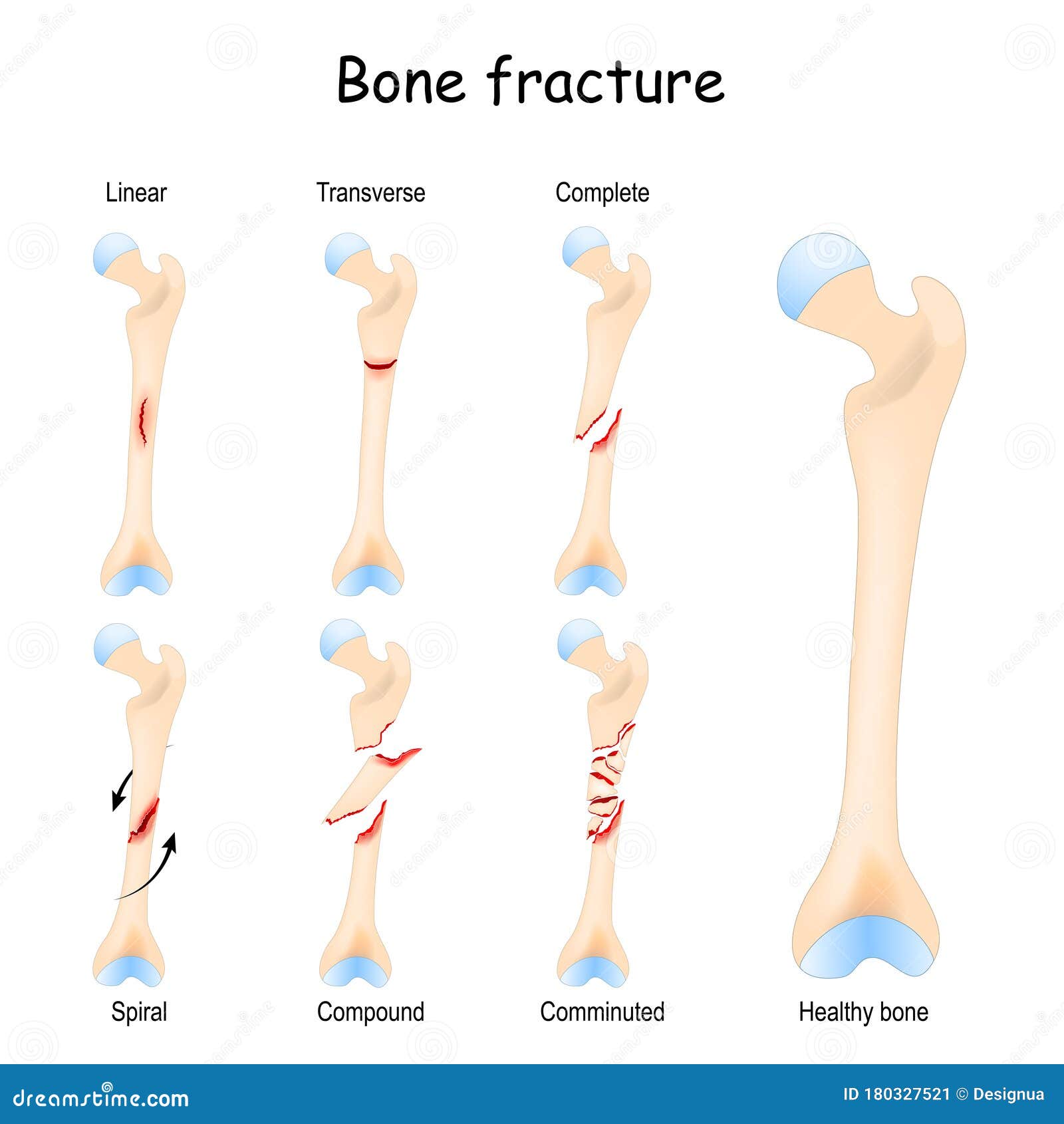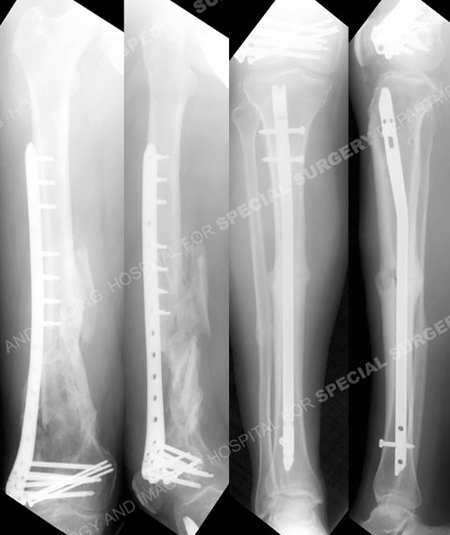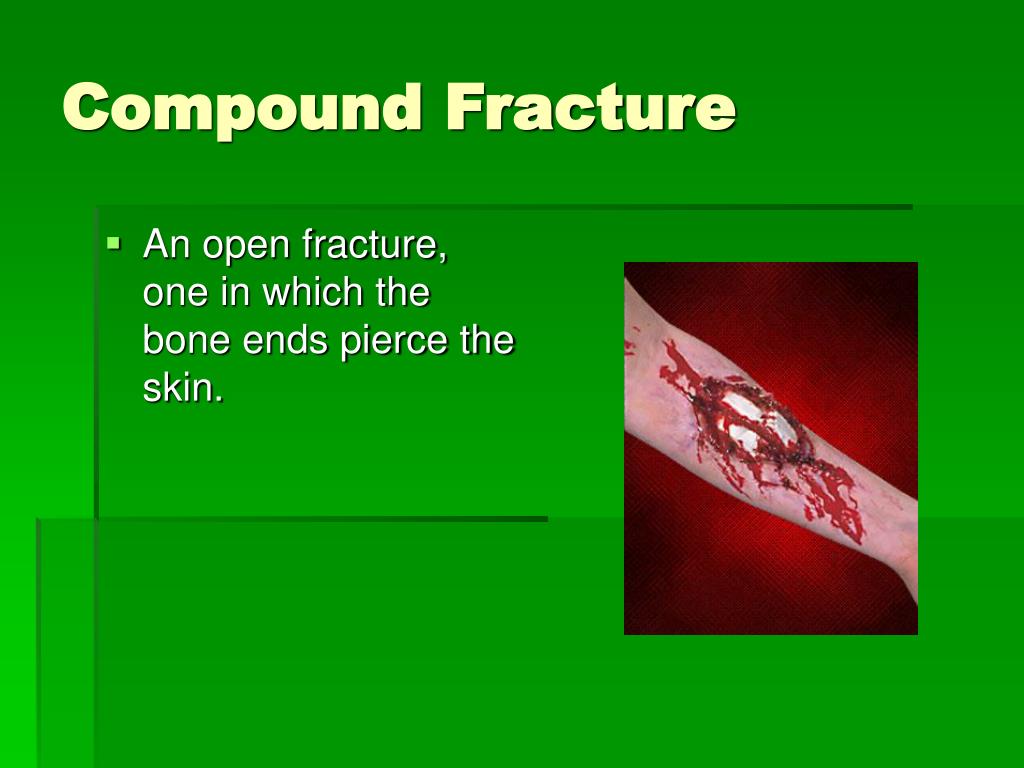
#DEFINE COMPOUND FRACTURE SKIN#
In this operation, the doctor inserts metal screws or pins through the skin into the bone above and below the fracture site. Most severe open fractures are first stabilized with external fixation. If your wound and broken bones are not yet ready for a permanent implant, your doctor may apply external fixation to your injured limb. In this severe open fracture, the doctor closes the wound with stitches after debridement and external fixation. In a subsequent (later) surgery if the skin and muscle need time to heal.During the initial surgery, after the fracture is cleaned.The implants will maintain the position of the bone and hold it together while the fracture heals. In this procedure, your doctor places metal implants - such as plates, rods, or screws - on the surface of or inside the broken bone. Open fractures are treated with either internal or external fixation. Once the wound has been cleaned, your doctor will evaluate the fracture and stabilize the bones. The wound will then be irrigated, or washed with fluid.If the wound is small, your doctor may need to create a larger wound so they can reach all of the affected areas of bone and soft tissue. In debridement, your doctor will remove all foreign and contaminated material - as well as damaged tissue - from the wound.These are the first steps in controlling the risk for infection. It is important to go to surgery as soon as possible so that your open wound can be cleaned to help prevent infection. The doctor will often stabilize your limb in a soft cast to keep the bones from moving until you are taken to surgery.Īlmost all open fractures are treated with surgery. Your wound will be covered with bandages. You will also be given a tetanus booster if you have not had one within the last 5 years. To help prevent infection, you will be given antibiotics in the emergency room. If more information is needed, your doctor may order a computerized tomography (CT) scan or another type of imaging test. X-rays will show the number of breaks in the bone, as well as the position and degree of separation (displacement) between the bony fragments.

Your doctor will order X-rays to help determine the extent of the fracture. When there is any wound in the same area as a broken bone, it is assumed that there is an open fracture. Examine the wound and fracture site, checking for damage to soft tissues, nerves, and circulation.


Objects such as dirt, broken glass, grass, mud, and even the patient's own clothing can be driven into an open wound. To some extent, the setting in which an open fracture occurs - the place where it happens - will affect the degree of contamination. The location of the wound and whether the soft tissues in the area have good blood supply.The damage to surrounding soft tissues (muscles, tendons, etc.).The size and number of the fracture fragments.The severity of an open fracture depends on several factors, including: Rosemont, IL, American Academy of Orthopaedic Surgeons, 2008: pp. Reproduced and adapted from Zalavras CG, Marcus RE, Levin LS, Patzakis MJ: Management of open fractures and subsequent complications. Special care must be taken to prevent infection. In this injury to the lower leg, the broken bones are not visible, but there is a small open wound over the fractures.


 0 kommentar(er)
0 kommentar(er)
